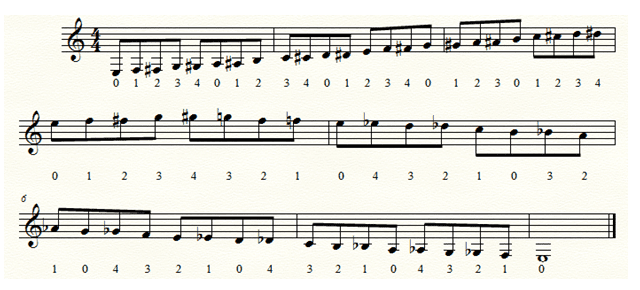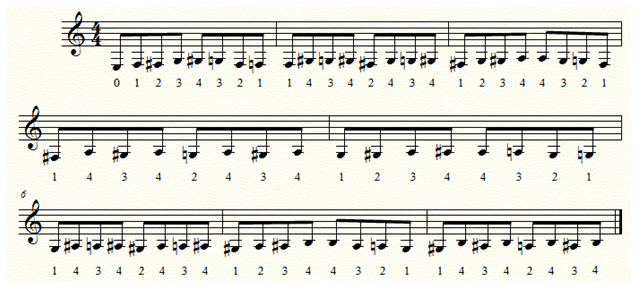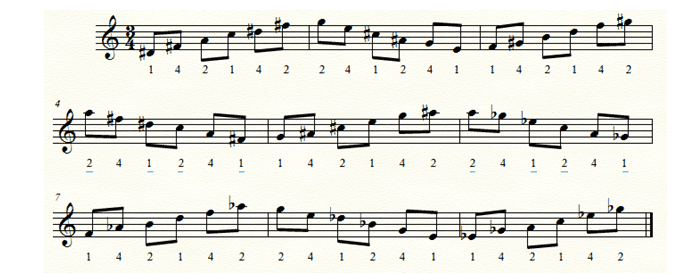 Earlier, we took a look at how to develop your right hand for classical guitar. In this article, guitar teacher Raymond L. will add to the balance by teaching you exercises for the left hand…
Earlier, we took a look at how to develop your right hand for classical guitar. In this article, guitar teacher Raymond L. will add to the balance by teaching you exercises for the left hand…
The classical guitar repertoire covers more scales and arpeggios than any other technical skill. Therefore, I consider it important for you, as a classical guitar player or student, to focus on these following guitar exercises.
They’re based on scales and arpeggios for the purpose of developing an agile and solid technique for the left-hand. It’s best to tackle these after you’ve established the basics for both hands.
Let’s get started with some of the best guitar exercises you can do for the left hand!
What Are Some Good Exercises for Guitar?
You might not lump guitar playing into the same category as deadlift or running sprints, but that doesn’t mean you don’t need to practice and perform certain guitar exercises to improve your abilities. Here are some of the best guitar exercises for beginners and experts alike:
- Warm-up
- Play some fingerstyle
- Use hybrid or alternating picking
- Try “arpeggiate”
- Try string-skipping licks
- Give different scales a try
There are hundreds of different guitar exercises you can do, each of which has a unique purpose and application in your practice routine. The best way to add any of these to your regimen is to work with a classic guitar teacher who will be able to show you the ropes.
Watching videos of these various hand exercises for guitar can help, too, especially as you’re mastering the proper technique. Here’s an example:
7 Best Guitar Finger Exercises to Improve Left Hand Technique
Here are the five exercises for classical guitar that I consider most important for your left-hand technique.
1) Chromatic scales on all strings (descending & ascending)
Chromatic scales are very common on the guitar. Take a look at this example of one:

You should play the chromatic scale starting on the open sixth string, then finger 1 on the first fret, finger 2 on the second fret, and so on. Repeat this pattern horizontally, descending and ascending, on all of the strings.
Take care not to repeat the “B” on the third string (fourth fret) when you make the move from the third to the second string, or skip the “B” on the third string (finger 4, fourth fret) and play the “B” as an open second string.
2) Variation on the chromatic scales (descending & ascending)
This variation has the following repetitive pattern using fingers:
1, 2, 3, 4 – 1, 4, 3, 4 – 2, 4, 3, 4 (on all the strings)
3) Diminished arpeggios using fingers 1 and 4 (chromatic/descending & ascending)
In this exercise you just use finger 1 and 4 on each string, starting from string 6 moving down to the next string, and every time taking the following fret of the next string but make sure to jump a fret when moving from string 3 to 2.
Play this exercise also descending and ascending:
4) Variation on the diminished arpeggios using fingers 1, 2, and 4 (chromatic/descending & ascending)
In this exercise, you start on string 4 with finger 1 on the first fret, and then move finger 4 to the fourth fret on the fourth string, then move down to the next string (string 3) on the second fret with the second finger.
Repeat this same continuous pattern starting from string 2 (first fret & fourth fret) to string 1 (second fret). Then make a descending chromatic move with finger 2 to the third fret.
Fret string 1 and resume with the same pattern but in reverse, until you reach string 4 again (now finger 1 should be on the second fret of string 4).
You always repeat this same finger pattern 1, 4, 2 – 1, 4, 2 – 2, 4, 1 – 2, 4, 1 in a chromatic/descending & ascending order.
5) Exercise using string 2 and 5 (chromatic/descending & ascending)
This exercise does not imply any specific harmonic characteristics but nevertheless is interesting to the ear and valuable to finger-motor coordination.
Start the exercise using finger 3 on string 5, third fret, and finger 1 on string 2, first fret.
Play them simultaneously, then place finger 2 on string 5, second fret, and finger 4 on string 2, fourth fret – play them simultaneously.
Now play simultaneously finger 1 on string 5, first fret, and finger 3 on third fret, then play simultaneously finger 4 on string 5, fourth fret, and finger 2 on string 2, 2nd fret.
Finally, go to when you started the exercise using finger 3 on string 5, third fret, and finger 1 on string 2, first fret, playing them simultaneously again.
Repeat this pattern chromatically descending and ascending.
RELATED VIDEO: Classical Guitar Fundamentals
6. Fixed Fingers
In this exercise, you’ll help build finger independence. This can improve your speed, control, and accuracy, three characteristics you’ve got to have if you want to make great music.
To do this, take three fingers and lock them where they are. The fourth finger will move around independently of the other ones.
Begin with 2, 3, and 4, fixed on the 6th, 7th, and 8th fret. Finger #1 can play from first to sixth string, then back. Skip the third string – this is the one with the fixed fingers. Swap fingers so that the second, third, and fourth do all the work.
After you’ve mastered this skill, you can work on using two fingers at once. They’ll move in opposing motion to each other. This is tough, but a great way to improve your left hand strength and ability.
Here’s a video to walk you through it:
7. Left Hand Warm-Up
Many of us focus on our right hand when we are getting warmed up for practice, but you also need to focus on the left hand.
There are all kinds of guitar exercises you can do to target this non-dominant hand specifically.
Here’s a video with a few great examples:
More Guitar Exercises to Improve Your Abilities as a Classical Player
Here are a few more guitar exercises to help turn you into a better classical guitar player.
1. Guitar Scale Exercises
Guitar scale exercises can improve both your left- and right-hand technique. They can enhance your speed, timing, and even your strength, helping you tone both your right and left hands.
The five main guitar scales you should master are:
- E minor pentatonic
- A minor pentatonic
- C major
- G major
- E harmonic
Each varies in terms of its difficulty and when you might want to use the skills you’ve gained from mastering it in a song. You can watch some helpful guitar scale exercises in this video:
2. Guitar Arpeggio Exercises
Guitar arpeggios are when you take the notes in a chord and play them one after the other rather than strumming all the notes at once. They can be played in ascending or descending order. Basically, an arpeggio is a scale that just has the notes of a chord. Not only can practicing guitar arpeggio exercises improve your speed, but it can also help you to better understand chord structure – and to create awesome-sounding licks!
Here’s a video that will walk you through fun ways you can practice your guitar arpeggios:
3. Guitar Picking Exercises
To improve your picking ability on the guitar, you’ll need to do some guitar exercises that target that skill specifically.
It doesn’t matter what style of guitar you are learning to play. Regardless of whether you are a jazz guitarist, electric guitar player, or of course, a classical guitar player, you should take the time to improve your picking ability.
Here’s a video with some helpful guitar picking exercises for guitar players of all kinds:
4. Guitar Speed Exercises
Finally, guitar exercises meant specifically to improve your speed will benefit you regardless of which style of guitar you are learning to play.
Even if you tend to play songs that are more on the long, slow, and steady side of things, knowing how to play fast will improve your memory, finger strength, and much more.
Here’s a video with some helpful guitar speed exercises you can do (make sure you use a metronome while you work!):
What Should I Practice Everyday on Guitar?
All of the guitar exercises above will help you become a more skilled guitarist. You probably won’t be able to add all of them to your daily practice routine, but try your best to incorporate as many as possible for the best results.
A few more basic tips to become a better guitar player?
- Practice at the same time every day to train both your body and your mind
- Practice while using a metronome
- Start slow – but build strong!
- Don’t forget to practice your chords, too
- Manage your time well – choose a variety of the exercises from each of the categories above
- Listen to your body – if your fingers start getting tired, don’t push through. Take a break!
- Take lessons with a skilled instructor whenever possible
Although I kept the examples short, you could repeat the sequence of each exercise until you reach the 12th fret or any uncomfortable position on the fret-board.
Obviously, there are other valuable left-hand exercises, as the “horizontal” chromatic scale from fret 1 to 12 descending and ascending on each string, the diatonic scale, the pentatonic scale, just to mention a few. These exercises are not discussed in this article, but you can still rely on the five we have shared, which will definitely do the difference.
Enjoy practicing!
 Post Author: Raymond L.
Post Author: Raymond L.Raymond L. teaches guitar, classical guitar, musical theory, ukulele, and Spanish in Jacksonville, FL. Raymond has been teaching for over 30 years and he specializes in pop, blues, modern, Latin, classical and popular music. Learn more about Raymond.
Photo by Jason Bachman
Megan L.








